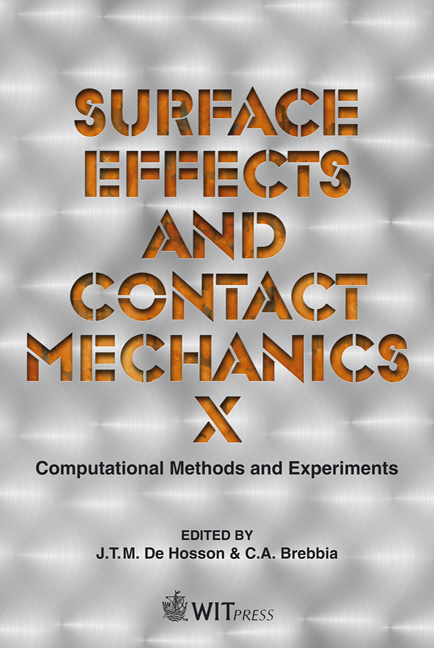Experimental Approach To Eliminate Start/Stop Defects In Laser Cladding
Price
Free (open access)
Transaction
Volume
71
Pages
10
Page Range
245 - 254
Published
2011
Size
4,218 kb
Paper DOI
10.2495/SECM110211
Copyright
WIT Press
Author(s)
V. Ocelík, M. Eekma, I. Hemmati, M. Dutka & J. Th. M. De Hosson
Abstract
Laser cladding represents an advanced hard facing technology for the deposition of a hard and corrosion resistant layer of controlled thickness onto a selected area of metallic substrate. When a circular geometry is required, the beginning and the end of the laser track coincide. This could lead to the formation of irregular microstructural features resulting in non-homogeneous properties. In this work a few different experimental strategies are examined to find a suitable approach in order to reduce this problem in the Start/Stop area. Laser cladding experiments were performed using 3.3 kW IPG Fiber laser, 40 mm in diameter SS304 steel substrate bar and two powders: Iron and Cobalt based. Standard metallographic methods, Scanning Electron Microscopy equipped with EDS and microhardness measurements were used to study the microstructure and properties inside the laser track overlapping areas created by different cladding strategies. These strategies were finally ranked according a few qualitative criteria and approaches are found which are beneficial over a situation where no special care is taken for the beginning and the end of laser clad track. Keywords: laser cladding, microstructure, defects. 1 Introduction Laser cladding is an advanced technique to deposit a thick coating onto a substrate in order to create a surface layer with specific properties suitable for certain applications. A high power laser beam is providing the heat source to melt simultaneously the substrate and the additional material, which will make up the coating, together. There are three different ways in which this additional
Keywords
laser cladding, microstructure, defects





